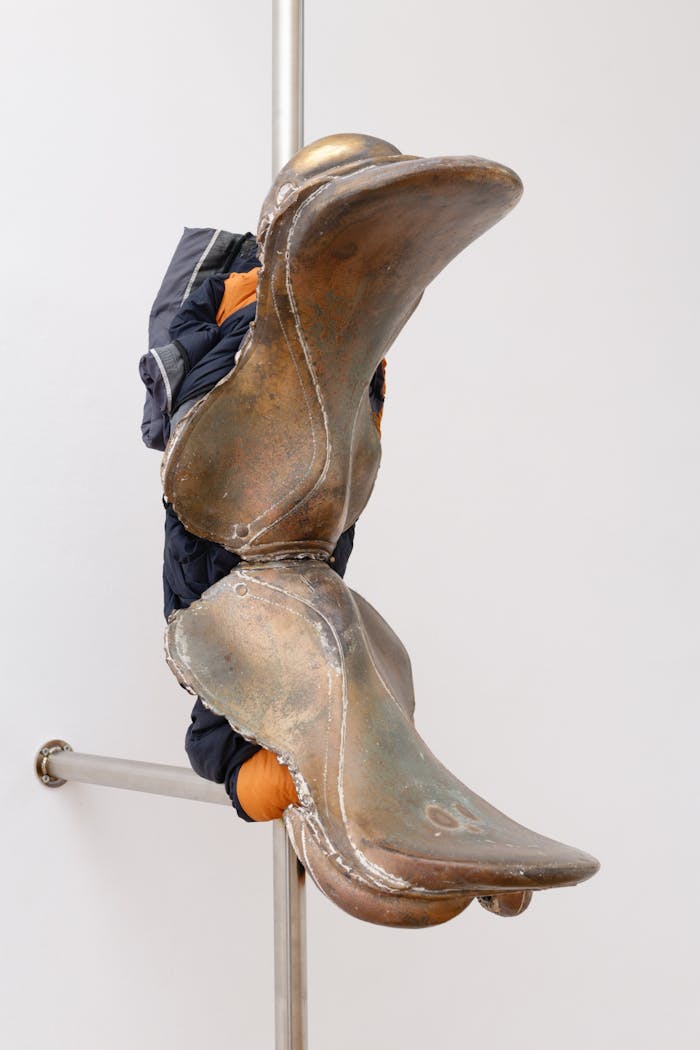‘The Bark’, the current group exhibition at CRAC Alsace, concerns inhabitants’ relationships with environments that have been violently transformed. As such, it’s partly a show about how land can be made distant, without any shadow or relief, silent and toxic. This transformation embedded in Western divisions sees humans and nonhumans as separate and not interlinked. One question the exhibition asks: how can both humans and nonhumans reconcile with their environment?
Curated by CRAC Alsace Director Elfi Turpin, ‘The Bark’ includes artworks by June Crespo, Mathilde Rosier and Ana Vaz that challenge these violent frameworks by highlighting other voices, stories and bodily experiences based on notions of care and resistance. Their gestures empower the visitor to establish alliances and affective relationships with the living world. A series of sculptures by June Crespo’s explores the object of the saddle. On the one hand, the saddle is point of connection between two bodies, a human being and a horse; on the other, it is a symbol of domestication. Mathilde Rosier’s paintings delve into anthropogenic environments that embody a desire for regeneration, ranging from farm machinery to dancing or marching hybrid bodies and dreamy landscapes. Additionally, the Brazilian artist and filmmaker Ana Vaz reflects upon cultures of extraction and dispossession. With Atomic Garden (2018), we discover a flower garden sprouting in Naraha, a Japanese town evacuated after the Fukushima nuclear disaster. It invites the viewer to consider the unexpected lives of newborn flowers and the gatherings of bees, in spite of this toxic wasteland. Her poetic film Olhe bem as montanhas (Look Closely at the Mountains) (2018) similarly invites us to engage with the mining areas in Minas Gerais, Brazil and Nord-Pas-de-Calais, France.
